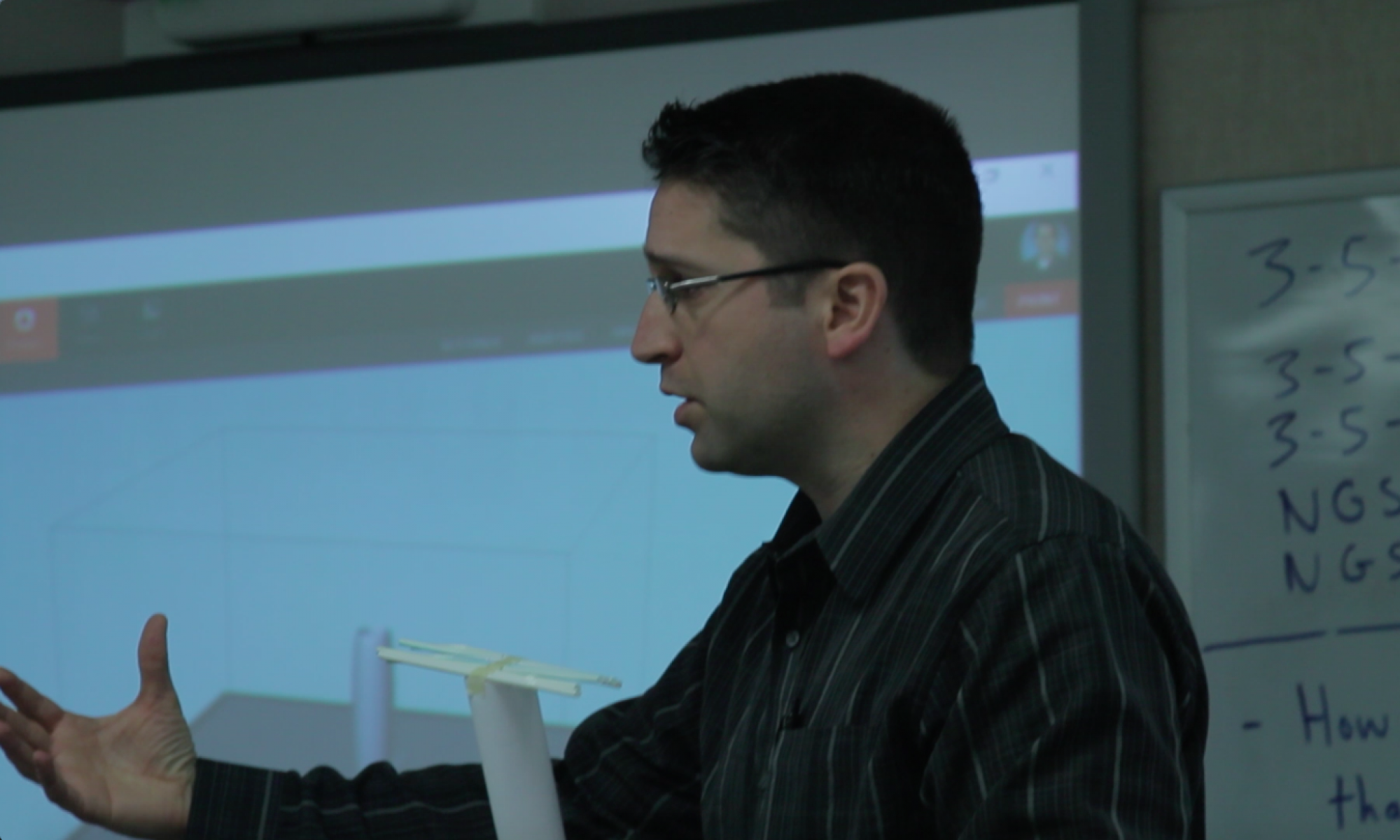
When it comes to classroom management and instruction, actively engaging learners in the learning process is important. Now, what do you envision when you think about the students in this case? Are they adults? If not then maybe they should be because teacher professional development and learning opportunities need to continue moving away from “do as I say” direct instruction to actively doing while learning. This is because Active Learning engages teachers in their own learning process so that they can better apply concepts from their own training to their own teaching.
“Active Learning engages
- teachers directly in the practices they are learning
- educators using authentic artifacts, interactive activities, and other strategies to provide contextualized professional learning.
- teachers by incorporating the elements of collaboration, coaching, feedback, and reflection.” (Trotter, 2006)
By applying research-based approaches in combination with standards-based practices like the ISTE Coaching Standards, we, as an educational community, can greatly increase the value and effectiveness of year-round professional learning experiences and opportunities. There are many ways to approach this, but why not start with something that most adult learners have at least heard of like PBL?
ISTE Coaching Standard 5
Professional Learning Facilitator: Performance Indicator 5b: Build the capacity of educators, leaders and instructional teams to put the ISTE Standards into practice by facilitating active learning and providing meaningful feedback.
PBL Engages Students in Active Learning, Why Not Teachers Too?
A great example of active learning in the classroom is PBL (project/problem based learning). In PBL, students engage directly in the learning by working through a series of involved and individualized steps as part of a group project focused on solving a problem. Adria Steinberg’s “Six A’s of Designing Projects”, as adapted to the The Six “A’s” of PBL Project Design in an article by Andrew Larson, provide a good basic outline of what active learning via PBL looks like. The Six “A’s” identifies the following PBL characteristics: authenticity, academic rigor, applied learning, active exploration, adult relationships, assessment. Students engage with peers in project-based learning that utilizes authentic artifacts and interactive activities at rigorous levels to explore possible solutions and then apply lessons learned—all while interacting with adults as mentors or authentic audience members and being assessed in an authentic manner. This very active learning provides students opportunities to collaborate, be coached, receive relevant feedback, and reflect on their learning both during and immediately after the process. So if all of this active learning happens for student participants in PBL then the obvious question is why not for adult participants? The answer is that it can and should.
Translating Student PBL Practices for Active Professional Learning
As adult educators, there is a lot of value exploring and learning like a student. This, in and of itself, can be beneficial for the educator looking to empathize with student’s perspective and identify areas for improvement by meeting students where they are at. Beyond, this, experiencing PBL is an effective means to learning concepts at all levels. So teachers immersing themselves in an authentic learning process can explore concepts relevant to their training which increases engagement. In Get a Taste of PBL Before Your Students Do, Andrew Miller speaks to the benefits of utilizing PBL for adult learning, “We know the value of PBL for professional development. Teachers work together on an authentic challenge to become true learners, exploring a driving question and participating in a launch, receiving instruction and feedback to support learning, and sharing their work and learning publicly. This helps teachers reflect on the experience of PBL, see challenges students will face, and create engagement and excitement for doing PBL in the classroom.” (Miller, 2017).
As part of a teacher-focused PBL in a professional development/learning experience, authentic artifacts can be provided (such as student work samples) and make for authentic teacher learning, which can increase the relevance as well as the ease of application back to the teachers’ respective classrooms. PBL is also interactive due to the group work and research and so provides teachers with active learning opportunities as they explore the provided activity, often learning through and about protocols for discussing and interacting as well as experiencing opportunities to work in teams and take on roles/jobs within their groups. Both PBL and Active learning involve collaboration, coaching, feedback, and reflection, so they blend well and provide good opportunities for teachers to actively learn in an adult professional learning. Teachers learn valuable lessons when they engage as active learners in their own professional learning, “Through the experience, teachers learn that a project-based-learning classroom feels a little like chaos — managed chaos. It is definitely clear PBL is active learning. They also learn that the power of performance can motivate even the most reluctant learners.” (Lenz, 2007)
Where to Begin When There’s So Much to Do?
There’s a lot to PL so it’s probably still challenging to envision what PBL for adults look like, especially when time is at an extreme premium. Where to start and how to do it all? Well, maybe one doesn’t have to do everything all at once, how about a slice of professional learning PL PBL pizza? “Project slices—condensed project-based learning for teachers—give educators a student’s perspective on what it’s like to do a project.” (Miller, 2017). The idea is very much worth exploring. The key is starting somewhere so that the benefits can begin to be realized through the transformation of professional learning experiences for educators. In this way, active learning can be realized outside of the classroom as part of the teacher’s professional learning experience and then back in the classroom where the teacher can bring active learning to the students. When teachers are authentically engaged in their own learning then they can more effectively transfer that learning to their own teaching context,”Teachers quickly move from making generalizations about the experience and its implications to applying what they’ve learned to the teachers’ future classrooms, their integrated project-based teams, and their schools as a whole.” (Lenz, 2007). So, just maybe, the question should be less about where do we begin and more about when?
References
- International Society for Technology in Education. (2019). ISTE Standards For Coaches. ISTE. Retrieved from https://www.iste.org/standards/for-coaches
- Miller, A. (2017, September 7). Get a Taste of PBL Before Your Students Do. Edutopia. Retrieved from https://www.edutopia.org/article/get-taste-pbl-your-students-do
- Lenz, B. (2007, August 29).Teachers, Like Students, Learn by Doing: Project Learning at Envision Schools. Edutopia. Retrieved from https://www.edutopia.org/envision-schools-PBL-professional-development
- Larson, A. (2019, June 12). The Six “A’s” of PBL Project Design. Magnify Learning. Retrieved from https://www.magnifylearningin.org/project-based-learning-blog/the-six-as-of-pbl-project-design
- Rivera, A. (2016, August 1). Why Do So Many Schools Want to Implement Project-Based Learning, But So Few Actually Do? EdSurge. Retrieved from https://www.edsurge.com/news/2016-08-01-why-do-so-many-schools-want-to-implement-project-based-learning-but-so-few-actually-do

The pizza analogy is an interesting visual to describe a potential year or the process of PBL for professional learning — I like it! People can take one slice, two, or even three! Decide maybe they didn’t want that third piece after all? Regardless of the visual, involving educators into the process of PBL and providing opportune coaching conversations and immediate and successive feedback are important components of applying the learning. I also appreciate the quote by Miller on how collaboration engages adult learners.
I really like the idea of project slices! Giving teachers an opportunity to learn and practice the way students do, but in a smaller and more manageable setup. I appreciate the way you reflected on the need for teacher learning to look more like the way we want our students to learn. No more “do as I say, not as I do.” I think you did a really great job tying PBL with the ISTE standards and adult learning. Something that schools could take and run with. Thanks for sharing!